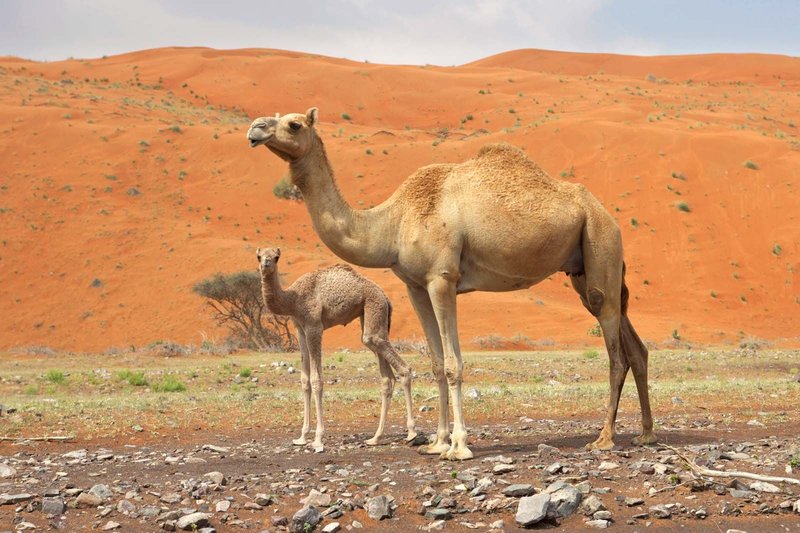
This topic is a bit like flipping over a rock and discovering what’s lurking underneath. On one side, you find sturdy, gentle animals that have helped humans for centuries, but on the flip side, it’s essential to consider the potential risks they pose. So, let’s brew a cup of coffee and dive into the world of dromedaries, exploring their behavior, how they interact with humans, and whether we should be cautious around these impressive creatures.
Understanding Dromedary Behavior
Dromedaries are fascinating animals, known for their adaptability and intelligence. They can withstand extreme temperatures and travel vast distances without water, making them invaluable partners for nomadic tribes. But their behavior can sometimes be unpredictable.
Dromedaries, like all animals, have distinct personalities. Some are calm and docile, while others might be a bit more feisty. Body language is key to understanding how a dromedary feels. If they’re swaying their head or making a low grunting sound, they might be feeling agitated or threatened. This is similar to how a dog might growl if it feels uncomfortable. Learning to read these signs can help you avoid any potential danger.
When interacting with a dromedary, it’s essential to approach them with respect and caution, particularly if they’re not accustomed to human contact. Just like you wouldn’t want to startle a horse, the same goes for these camels. It’s all about creating a safe environment where both you and the animal feel comfortable.
Potential Risks of Dromedary Interaction
While dromedaries can be friendly and approachable, there are risks associated with interacting with them. One of the primary concerns is their strength. Adult dromedaries can weigh over 1,000 pounds, and they’re capable of powerful kicks and bites, especially if they feel threatened or provoked.
Here are some potential risks to keep in mind:
- Kicking: Dromedaries can kick with great force. If they feel cornered or frightened, they might lash out to defend themselves.
- Biting: They have strong jaws and can bite if they feel threatened. This can be especially dangerous if the animal is startled.
- Spitting: You might have heard stories about camels spitting. While it’s not harmful, it’s definitely a sign that they’re unhappy!
Understanding these risks can help you take necessary precautions if you find yourself in the presence of dromedaries. Respecting their space is crucial.
Training and Handling Dromedaries
Training plays a significant role in how a dromedary interacts with humans. Well-trained dromedaries are generally more docile and easier to handle. There are multiple training programs designed specifically for these animals, focusing on positive reinforcement—a method that helps build trust rather than instill fear.
Trainers often start working with young dromedaries to ensure they grow accustomed to human interaction. This process can involve:
- Socialization: Gently introducing them to various environments and people to build confidence.
- Desensitization: Gradually exposing them to sights, sounds, and activities that may initially scare them.
- Positive Reinforcement: Rewarding desirable behaviors with treats or praise to encourage good habits.
When dromedaries are trained well, they can become loyal companions, much like well-trained dogs or horses. Training isn’t just about making them easier to handle; it’s about fostering a bond that minimizes the risk of danger.
Health and Safety Considerations
Just like any animal, dromedaries can carry diseases that may pose a risk to humans. One of the more notable issues is the transmission of zoonotic diseases, which are diseases that can spread from animals to humans.
For example, dromedaries can carry brucellosis, a bacterial infection that can affect people. Symptoms can range from flu-like feelings to more severe complications. It’s not common, but it’s a reason to practice good hygiene when around them.
When dealing with dromedaries, especially in agricultural or safari settings, it’s vital to take appropriate health precautions:
- Wash hands: Always wash your hands after handling food, equipment, or being in contact with animals.
- Protective gear: Use gloves if necessary, especially if you’re working closely with the animals.
- Regular health checks: Ensure that any dromedaries you interact with are regularly checked by a veterinarian.
These practices can help ensure your safety while enjoying the beauty of these amazing creatures.
Comparing Dromedaries to Other Camel Species
There are two main types of camels: the dromedary and the Bactrian camel, which has two humps. While both species have similar traits, their behavior and how they interact with humans can differ.
Generally, dromedaries are more commonly found in desert regions and are known for their speed and agility. Bactrian camels, on the other hand, are often found in colder climates and can be a bit more docile. Here’s a quick comparison:
| Feature | Dromedary | Bactrian |
|---|---|---|
| Humps | One | Two |
| Habitat | Hot deserts | Cold, rocky regions |
| Behavior | Generally more active | Can be calmer and slower |
Understanding these differences can shed light on why some might be perceived as more dangerous than others. But remember, individual temperament can vary widely within each species!
So, can dromedaries be dangerous to humans? The answer isn’t a simple yes or no. While they can pose risks, particularly if not handled properly, with the right understanding and training, these animals can be gentle giants. They’ve served humans for centuries, providing transportation and companionship in some of the most challenging environments on Earth.
If you ever find yourself near a dromedary, remember to respect their space, approach with care, and be aware of their body language. By doing this, you can enjoy the experience of interacting with one of nature’s remarkable creatures without unnecessary risk. After all, every animal has its quirks, and knowing them can turn a potentially dangerous situation into a memorable encounter.

